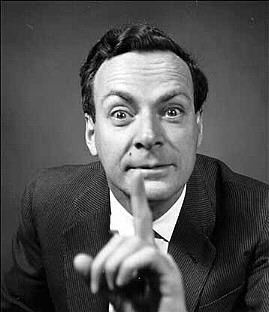Richard Phillips Feynman
Claimed by Catherine Johnson
Richard Phillips Feynman, an American theoretical physicist, was quite famous for his work with quantum mechanics, electrodynamics, and superfluidity, but was most known for his familiarization with particle physics. He proposed the parton model in 1969.

Personal Life
Feynman was born in New York City, New York, on May 11th, 1918, to Lucille and Melville Arthur Feynman. His parents originated from Poland and Russia, and both were Ashkenazi Jews, or "Germanic Jews". However, neither of his parents were very religious, and therefore, Richard proclaimed himself atheist as a young boy. Feynman could not talk until the age of three, but once he could, he closely retained his Bronx accent. As Feynman grew, his parents were greatly supportive of his creative mind-set. His father continuously pushed him to think beyond the box, and his mother provided him with a sense of humor that carried him happily through life. He became a little engineer all on his own, and by age 10, he created a home burglar alarm while his parents were out. At age nine, Feynman gained a baby sister Joan, and the two became very close. Although Richard's mother disapproved of Joan's high level of curiosity for a woman, Richard always encouraged his little sister, and she later became an astrophysicist specializing in Earth's solar winds. Due to his family's constant support, Feynman developed a general curiosity about the world that led him to discover great things in his near future.
Zeroth Law
A Mathematical Model
Examples
Connectedness
- How is this topic connected to something that you are interested in?
- How is it connected to your major?
- Is there an interesting industrial application?
History
See also
Are there related topics or categories in this wiki resource for the curious reader to explore? How does this topic fit into that context?
Further reading
Books, Articles or other print media on this topic
External links
Internet resources on this topic
References
https://www.grc.nasa.gov/www/k-12/airplane/thermo0.html http://hyperphysics.phy-astr.gsu.edu/hbase/thermo/thereq.html https://www.grc.nasa.gov/www/k-12/airplane/thermo2.html http://www.phys.nthu.edu.tw/~thschang/notes/GP21.pdf http://www.eoearth.org/view/article/153532/